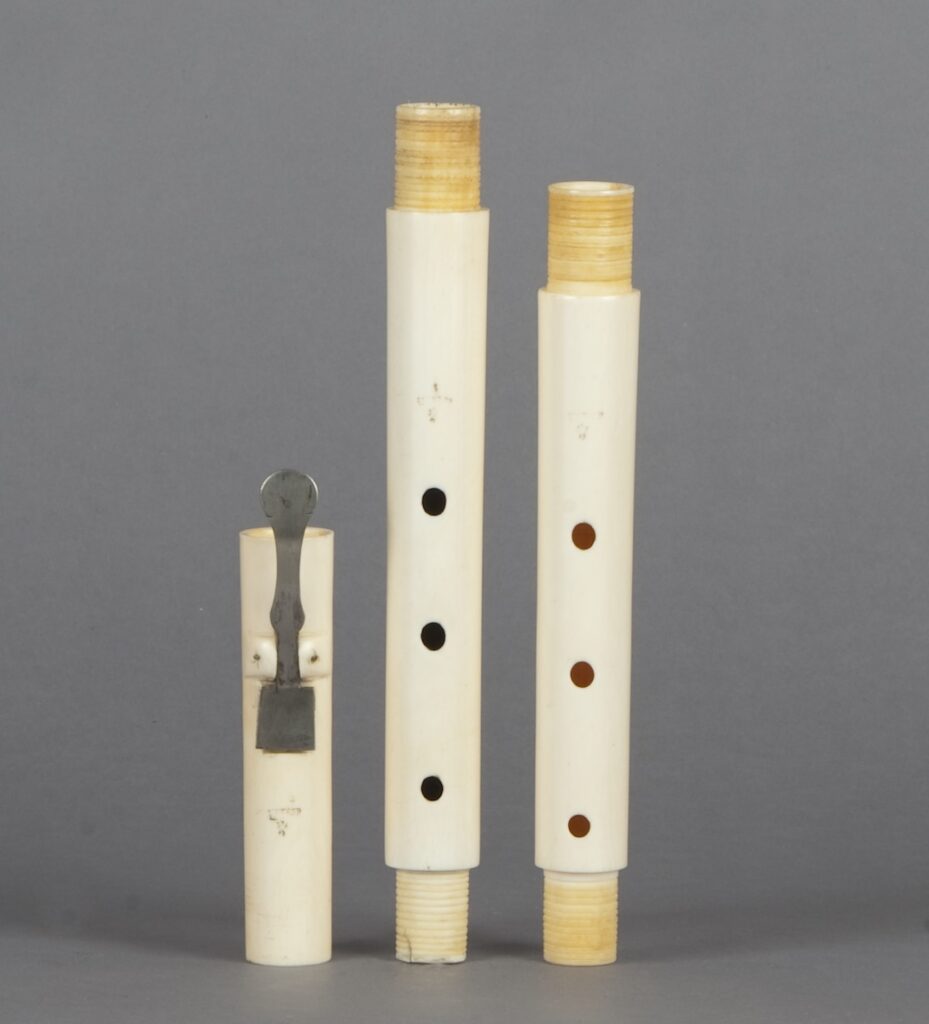As a musician and a scholar of music, my sensorial orientation in and towards space is one that almost always favors the ear. Interfacing with Robert Horvath’s Room for the Lost Paradise invites, in this way, a sonic encounter in three movements: the soundscape of the Indianapolis Museum of Art’s central void, the clamor of the gallery that houses Horvath’s work and, finally, the acoustic confines of the four walls of the installation itself.
Greeting the artist amidst the chatter of schoolchildren, our visit to the IMA opened with the echoes of a field trip not unlike our own. Ascending to the third floor of the museum, the door to the exhibition gallery closed behind us. The then largely empty space amplified our collective scuffing of shoes and coffee cups. As we approached, we were invited to enter Horvath’s installation with socked feet. I was immediately drawn into the experience of spatial compression. Not unlike the nestling of matryoshka dolls, one stands inside a room within a room within a room. Sharing this intimate space with five other people also revealed, too, the acoustic compression that the work facilitates. Beneath its thousandfold skin of watercolored paper, masquerading as the ornamental interiors of an eighteenth-century salon, lies a utilitarian skeleton of 2×4 lumber and MDO paneling whose industrial surfaces animate a very live acoustic in which every breath and every footstep is immediately heard and felt. To the extent that the work plays with the visual vocabulary of the rococo to speak a contemporary language, I couldn’t help but wonder what kind of musical vernacular the space would or could speak.

One symposium participant asked which historical figure Horvath envisioned as occupying the room—could it be the Prince of Nassau as painted by Elisabeth Louise Vigée Le Brun (also at the IMA)? For Horvath, his travels through Austria and Germany—and especially his engagement with Schloss Sanssouci in Potsdam—proved deeply inspiring. Named for the decadent abandon of its royal patron, King Frederick II (Fig. 1), this reference also offers us a particular way of thinking through Horvath’s work in terms of sound and music. The aforementioned three movements—both literal and figurative—also mirror the musical structure of the flute sonatas that Frederick composed and played: slow, fast, fastest. Indeed, this sense of temporal compression through the successive quickening of pace reflects the experience of spatial compression one encounters with Room for the Lost Paradise itself: large, smaller, smallest.
Frederick’s Flute Sonata No. 126 in A minor (c. 1740) is especially demonstrative of this ethos. It opens with a speech-like statement (recitativo) full of rhetorical gestures: sighing motifs, sudden pauses, and irregular phrase lengths. Here, Frederick invites the flautist to adopt the role of an orator who, through the key of A minor, establishes a sense of introspection and gentle melancholy. The second movement signals a shift from inward reflection to outward motion, but the non molto (not too fast) marking tempers any undue exuberance—it is a measured kind of musical unfolding. The third and final movement brings clarity and resolution. Marked allegro assai (very fast), it expresses virtuosic figuration, sudden registral shifts, and lively sequences. What kind of melancholy does this sonata then communicate in the context of Horvath’s work?

Embracing the titular reference to John Milton’s Paradise Lost (1667), we might not read Frederick’s sonata as a grief of sudden loss but, rather, as a controlled kind of lamentation or a sorrow born of distance, displacement, and hindsight. Milton’s epic, too, is constructed through the lens of a retrospective fall: a paradise not simply “lost” but ultimately rendered irretrievable by human will and divine judgment. In Horvath’s Room for the Lost Paradise, this melancholy becomes ecocritical; it is a meditation on the distance between the rococo’s ornamental pleasures and the extractive realities that made their designs possible. The very instruments that Frederick II played also speak to this tension through the materials from which they were fashioned. Flutes carved from ivory and ebony, and adorned with silver keys, transform the sounds of courtly refinement into the cries of colonial extraction (Fig. 2). These precious biogenic resources—drawn from the woodlands of sub-Saharan Africa, the colonies of the Americas, and the trade routes of South Asia—carry within them entangled histories of ecological plunder and human exploitation.
Horvath’s gilded surfaces similarly veil a substrate of violence. And here, the lifeblood of the elephant sings in the flute of a king who wielded its tusks, not unlike the trophy hunters that adorn the Room for the Lost Paradise. Reading the music of Frederick II through Horvath’s installation thus reveals that this is not simply a melancholy of collapse but one of compression—of the temporal, the spatial, and the sonic registers that unfold inward. Just as the Frederician sonata form accelerates while the room that houses it narrows, so too does the elegy quicken: a rococo lament revoiced in the key of our present climate crisis. If Milton’s Paradise Lost marks the narrative arc of the fall of man, then Horvath’s work (and the potential of Frederick’s music within it) traces the resonance of that fall.
Makoto Harris Takao is Assistant Professor of Musicology at the University of Illinois, Urbana-Champaign. In January 2026 he will join the faculty at the Massachusetts Institute of Technology in Cambridge, MA
Cite this note as: Makoto Harris Takao, “What the Elephant Heard” Journal18 (July 2025), https://www.journal18.org/7919.
License: CC BY-NC
Journal18 is published under a Creative Commons CC BY-NC International 4.0 license. Use of any content published in Journal18 must be for non-commercial purposes and appropriate credit must be given to the author of the content. Details for appropriate citation appear above.
